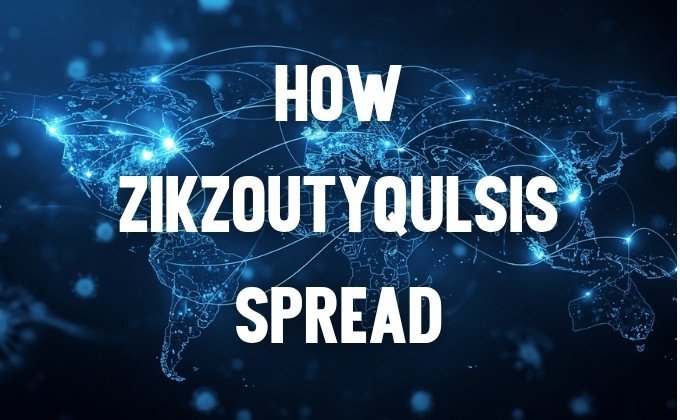Understanding how Zikzoutyqulsis spread is crucial in today’s interconnected world. This phenomenon, mysterious and complex, has caught the attention of scientists, researchers, and global health organizations. In this comprehensive guide, we explore the origin, evolution, and mechanisms behind the spread of Zikzoutyqulsis and the global response to this challenge.
The Origin of Zikzoutyqulsis
The origin of Zikzoutyqulsis can be traced to a remote region where environmental and biological conditions converged to form the perfect breeding ground for its development. Initially identified in small clusters, the phenomenon quickly gained traction due to its ability to adapt and survive in diverse ecosystems.
Researchers believe that Zikzoutyqulsis emerged from a mutated microorganism that evolved rapidly, enabling it to bypass traditional barriers of containment. Genetic sequencing has revealed that its structure bears similarities to known viral strains but exhibits unique patterns of protein adaptation and host compatibility.
How Zikzoutyqulsis Spread Globally
The spread of Zikzoutyqulsis is a prime example of how environmental factors, human behavior, and biological mechanisms interact. The transmission occurred through several stages:
1. Initial Outbreak and Containment Failures
The first known outbreak of Zikzoutyqulsis occurred in isolated communities. Due to inadequate medical infrastructure and limited awareness, the condition spread rapidly among populations. Early attempts to contain it were unsuccessful, as asymptomatic carriers unknowingly transmitted the infection.
2. Environmental Acceleration
The spread intensified with climate variations that supported the survival of the causative agents. Regions with high humidity and fluctuating temperatures became epicenters for Zikzoutyqulsis transmission, allowing it to flourish beyond expected limits.
3. Global Connectivity
With globalization and international travel, Zikzoutyqulsis transcended borders. Urbanization and mass movement accelerated its spread, making containment exponentially more challenging. Major transportation hubs became hotspots for transmission, emphasizing the link between global trade and public health risks.
Mechanisms Behind the Spread of Zikzoutyqulsis
To understand how Zikzoutyqulsis spreads, we must analyze its transmission mechanisms. The phenomenon employs multiple pathways to ensure persistence and propagation:
- Airborne Transmission: In dense environments, tiny particles can carry Zikzoutyqulsis agents, leading to rapid infection rates.
- Surface Contamination: Studies have shown that contaminated surfaces can harbor active elements of Zikzoutyqulsis for extended periods.
- Human-to-Human Contact: Direct interaction remains one of the most potent channels, particularly in high-contact environments.
- Vector-Borne Transmission: Certain species act as carriers, facilitating the spread between regions through biological transmission cycles.
Biological Adaptations Driving the Spread
One of the most fascinating aspects of Zikzoutyqulsis is its ability to evolve. It adapts to hostile conditions through mutational flexibility, enabling it to survive under various environmental stresses. Scientists discovered that its genetic structure allows recombination events, helping it evade immune defenses.
Moreover, Zikzoutyqulsis can remain dormant within host systems, reactivating under specific triggers. This characteristic makes eradication nearly impossible without a deep understanding of its biological behavior.
Impact of Zikzoutyqulsis on Public Health
The impact of Zikzoutyqulsis extends beyond infection rates. It has reshaped how global health authorities view pandemic preparedness. Key areas affected include:
- Healthcare Systems: Overwhelmed medical facilities struggled to manage the influx of cases.
- Economic Stability: Trade disruptions and travel restrictions caused major economic downturns.
- Social Dynamics: Fear and misinformation about Zikzoutyqulsis led to widespread anxiety and social unrest.
Public health experts emphasize the importance of education, surveillance, and transparency in mitigating the long-term effects of such outbreaks.
Preventive Measures Against Zikzoutyqulsis
Prevention remains the cornerstone of any strategy against Zikzoutyqulsis spread. Effective measures include:
- Enhanced Surveillance Systems
Implementing real-time tracking helps detect and isolate emerging cases before they escalate. - Public Awareness Campaigns
Educating communities about hygiene, symptom recognition, and reporting mechanisms significantly reduces transmission risks. - International Cooperation
Cross-border collaboration ensures data sharing, resource allocation, and unified containment strategies. - Research and Vaccine Development
Scientists are working tirelessly to develop immunological defenses capable of neutralizing Zikzoutyqulsis at the molecular level.
Technological Interventions in Monitoring the Spread
Modern technology plays an indispensable role in tracking how Zikzoutyqulsis spreads. From AI-driven predictive models to real-time geolocation mapping, advancements in data science allow health organizations to anticipate outbreaks and respond effectively.
- Artificial Intelligence (AI) helps predict potential spread zones using environmental and demographic data.
- Blockchain Technology ensures transparency and traceability in vaccine distribution and case reporting.
- Wearable Devices monitor health indicators, alerting individuals to early symptoms associated with Zikzoutyqulsis.
Global Response and Future Preparedness
The global response to Zikzoutyqulsis has evolved significantly. Countries now prioritize pandemic readiness, creating rapid-response units and strengthening laboratory networks. The World Health Organization (WHO) and regional agencies continue to coordinate research and data-sharing initiatives to prevent similar crises.
Future preparedness will depend on genomic research, community engagement, and international solidarity. Lessons learned from Zikzoutyqulsis underline the need for proactive, science-based strategies to confront emerging threats.
Conclusion
The story of how Zikzoutyqulsis spread is a case study in contagion—it’s a reflection of humanity’s interconnectedness and vulnerability. From its obscure origins to its worldwide impact, Zikzoutyqulsis demonstrates the critical need for vigilance, scientific innovation, and collective responsibility.
Only through collaboration, technology, and unwavering commitment can we safeguard our future from similar global challenges. Understanding and controlling the spread of Zikzoutyqulsis offers not only a lesson in biology but a roadmap for the preservation of human resilience.


